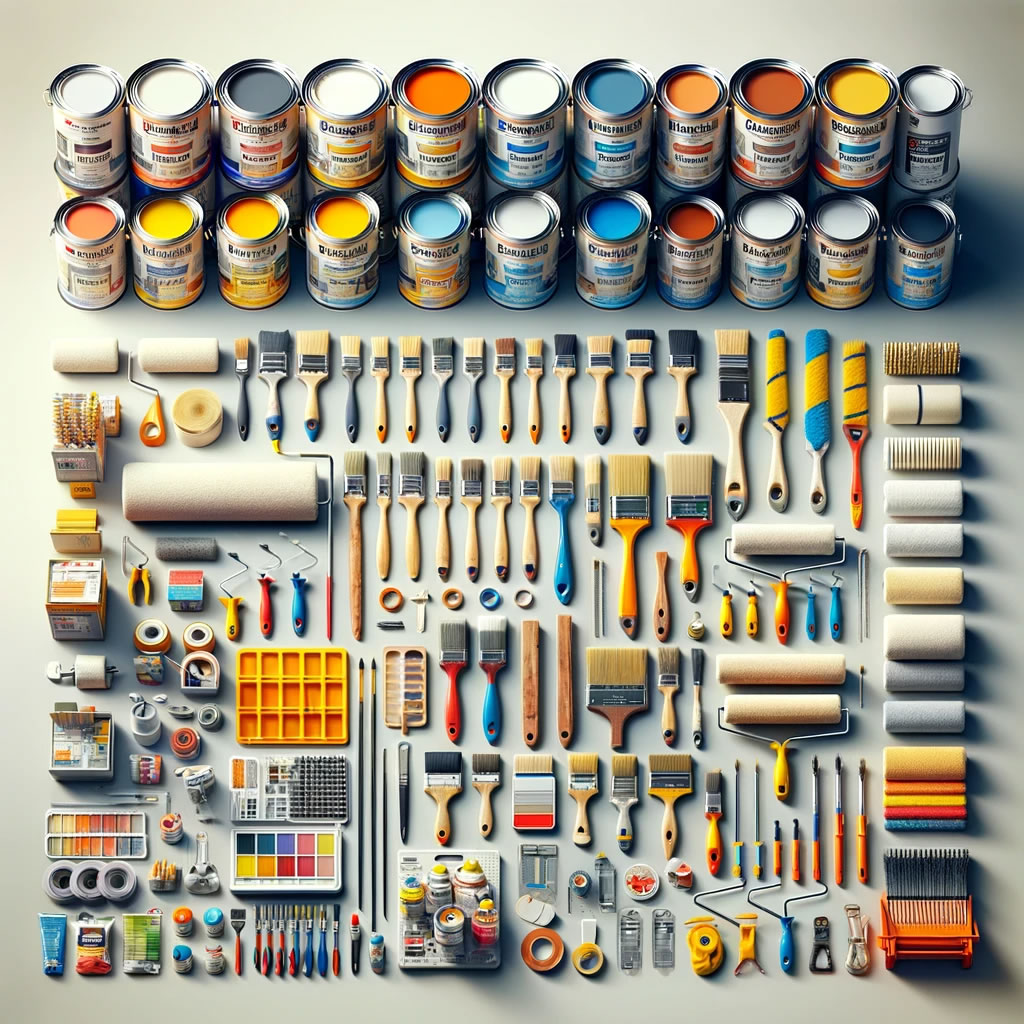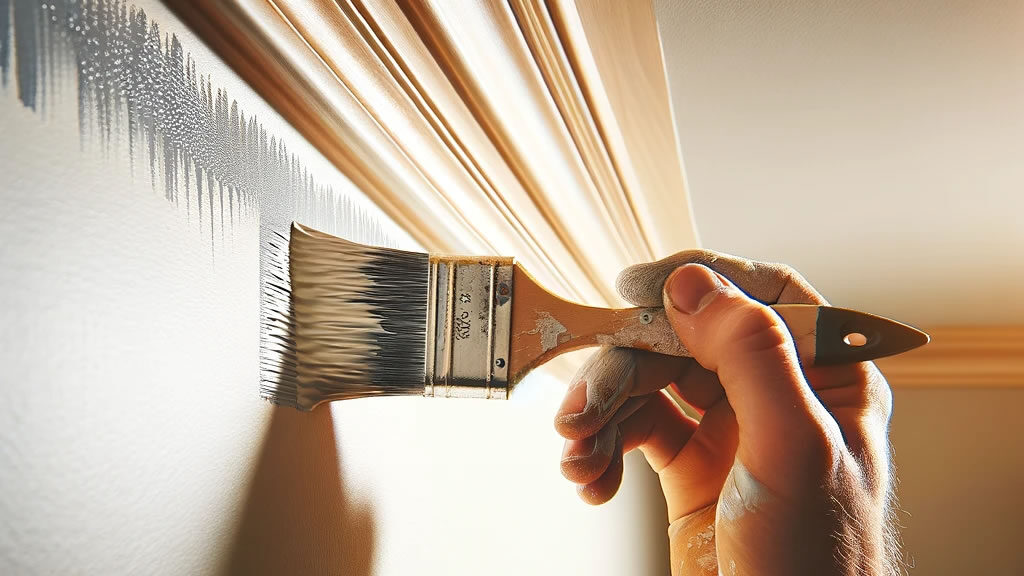How to Paint Your House: Painting your house can be a daunting task, but with the right tips and techniques, you can achieve a professional-looking paint job.
Whether you’re a seasoned DIY-er or a first-time painter, there are several things you can do to make the process easier and ensure a flawless finish.
One of the most important things to keep in mind when painting your house is to choose the right paint and tools for the job.
Professional painters recommend using high-quality paint and brushes to achieve the best results.

You should also take the time to properly prepare the surface you’ll be painting, including cleaning and sanding it as needed.
Another key factor in achieving a professional-looking paint job is to use the right techniques.
This includes using the proper brush strokes, applying paint in thin, even coats, and allowing each coat to dry completely before applying the next.
By following these tips and techniques, you can paint your house like a pro and enjoy beautiful, long-lasting results.
Table of Contents
Preparation and Surface Priming
Before you start painting your house like a pro, it’s essential to prepare the room and surfaces you’ll be working on. Proper preparation will ensure that the paint will adhere well and last longer.
Room and Furniture Prep
Start by removing all furniture from the room or covering it with plastic sheeting. Cover the floors with drop cloths to protect them from paint spills.
Use painter’s tape to mask off areas you don’t want to paint, such as trim, baseboards, and door frames.
Surface Cleaning and Sanding
Clean the surfaces you’ll be painting with trisodium phosphate (TSP) to remove any dirt, grime, or grease.
Sand the surfaces lightly to create a rough texture that will help the paint adhere better.
Priming Walls and Ceilings
Priming is an essential step in preparing surfaces for painting.
Use a high-quality primer to seal the surface, cover imperfections, and create a smooth, even base for the paint. Apply the primer with a brush or roller, and allow it to dry completely before painting.
If you’re painting new drywall, it’s especially important to prime it first. New drywall is porous and will absorb paint unevenly without a primer.
Use a drywall primer to seal the surface and create an even base for the paint.
In summary, proper preparation and surface priming are key to achieving a professional-looking paint job.
Take the time to protect your furniture, clean and sand the surfaces, and apply a high-quality primer before painting. By doing so, you’ll ensure that your paint job will last longer and look better.
Painting Techniques and Tools

When it comes to painting your house like a pro, choosing the right tools is crucial.
The right tools can make all the difference in achieving a professional-looking finish. Here are some tips on tools and techniques to help you get started.
Choosing the Right Tools
When choosing your tools, you want to consider the type of paint you are using and the surface you are painting.
For example, if you are using a latex paint, you will want to use brushes and rollers made for water-based paints.
If you are painting a rough surface, you may want to use a thicker roller cover to get better coverage.
Here are some tools you will need:
- Paint can opener
- Paint tray
- Angled brush
- Good quality brush with nylon or polyester bristles
- Roller covers
- Extension pole
- Foam rollers
Brush and Roller Techniques
To achieve a professional-looking finish, it is important to use the right brush and roller techniques.
When using a brush, dip it about a third of the way into the paint and tap it against the side of the can to remove excess paint.
Use long, smooth strokes to apply the paint, and be sure to maintain a wet edge to avoid lap marks.
When using a roller, start by pouring some paint into the paint tray.
Dip the roller into the paint and roll it back and forth on the tray to remove excess paint.
Use a W-shaped motion to apply the paint to the wall, and be sure to overlap each stroke slightly to avoid leaving gaps.
Cutting In and Detail Work
Cutting in refers to painting the edges of a room, such as around windows and doors, where a roller cannot reach.
To do this, use a good brush and a steady hand. Hold the brush at a slight angle and use short, smooth strokes to apply the paint.
For detail work, such as painting trim and molding, use a small brush and take your time.
Use a light touch and be sure to remove any excess paint from the brush before applying it to the surface.
By following these techniques and using the right tools, you can achieve a professional-looking finish when painting your house.
Applying Paint and Final Touches
Once you have completed the prep work, it’s time to start painting. Here are some tips to help you apply paint like a pro.
The Correct Order of Painting
When painting a room, it’s important to follow the correct order. Start with the ceiling, then move on to the walls, and finish with the baseboards and trim.
This will help you avoid drips and ensure that you get a smooth finish.
Applying Multiple Coats
In most cases, you will need to apply two coats of paint to get a smooth, even finish. Make sure that you allow enough time for the first coat to dry before applying the second coat.
If you are using a roller cover, be sure to use a nap that is appropriate for the surface you are painting.
For example, a smooth surface will require a shorter nap, while a rough surface will require a longer nap.
Cleanup and Finishing Touches
Once you have finished painting, it’s important to clean up properly. Remove the painter’s tape and drop cloth, and clean your brushes and rollers thoroughly.
If you have used oil-based paint, you will need to use a solvent such as mineral spirits to clean your brushes and rollers.
Finally, take a step back and admire your work. If you notice any areas that need touch-ups, now is the time to do them.
With these tips and techniques, you can paint your house like a pro and achieve a beautiful, long-lasting finish.
Remember to choose the right paint color and use premium paint, such as flat paint for ceilings and eggshell or satin finish for walls.
Don’t forget to prime your walls before painting to ensure that the paint adheres properly.
Frequently Asked Questions
What are the essential steps for preparing a house’s exterior before painting?
Before painting the exterior of your house, it is important to prepare the surface properly.
This includes cleaning the surface, removing loose paint, sanding rough areas, and repairing any damaged areas.
You should also cover any areas that you don’t want to be painted, such as windows, doors, and fixtures.
What techniques should be used for a professional-looking interior paint job?
For a professional-looking interior paint job, it is important to use the right techniques.
This includes using high-quality paint, preparing the surface properly, using the right tools, and applying the paint in thin, even coats.
You should also use masking tape to protect areas that you don’t want to be painted, such as baseboards and trim.
Can you provide tips for choosing the right paint and tools for house painting?
Choosing the right paint and tools for house painting is important for achieving a high-quality finish.
When choosing paint, consider factors such as the type of surface you are painting, the color you want, and the level of durability you need.
When choosing tools, consider factors such as the size of the surface you are painting, the type of paint you are using, and your level of experience.
How do you achieve even and smooth paint coverage on walls?
Achieving even and smooth paint coverage on walls requires proper preparation and application.
This includes cleaning the surface, repairing any damage, using the right tools, and applying the paint in thin, even coats. You should also use a roller with a high-quality nap and avoid overloading it with paint.
What are the best practices for painting with acrylics on house surfaces?
When painting with acrylics on house surfaces, it is important to use the right techniques. This includes using high-quality paint, preparing the surface properly, using the right tools, and applying the paint in thin, even coats.
You should also avoid painting in extreme temperatures or humidity, as this can affect the drying time and adhesion of the paint.
What are the hallmarks of a high-quality paint job on a house’s exterior and interior?
The hallmarks of a high-quality paint job on a house’s exterior and interior include a smooth and even finish, good adhesion, and durability.
The paint should also be applied in thin, even coats and the surface should be properly prepared beforehand.
Finally, the paint should be allowed to dry and cure properly before being exposed to the elements.



